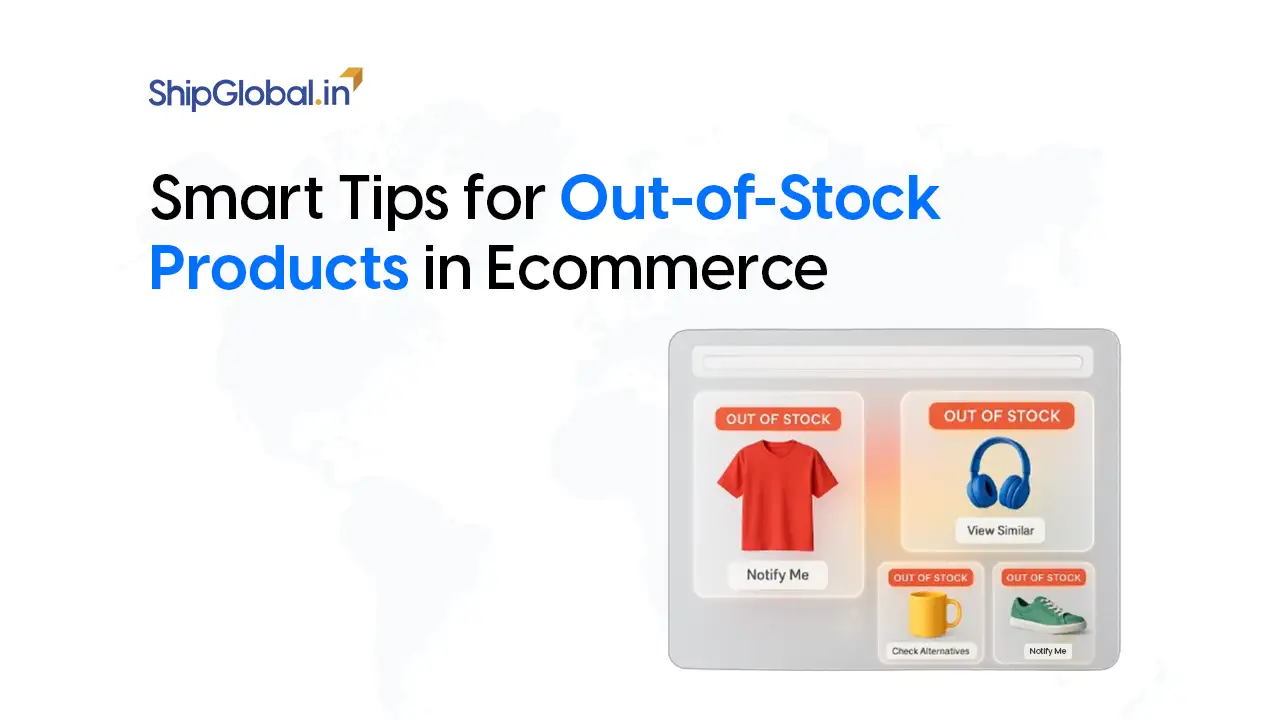If you’ve ever been involved in shipping documentation, international logistics, or trade finance, you’ve probably heard about the Bill of Lading, often called BOL. But what exactly is it? Why do people call it a Document of Title, a Legal Contract of Carriage, and a Receipt of Goods all at once? And what’s the difference between a Straight Bill of Lading, an Order Bill of Lading, and other types?
Let’s break it all down in plain language, so you can see why the functional role of BOL is so central to the entire logistics chain documentation, transfer of ownership, and international trade compliance.
Why the Bill of Lading Is More Than Just Paperwork
At its heart, the Bill of Lading serves three big roles:
- It’s a Receipt of Goods – proof that the Carrier has picked up the cargo from the Shipper.
- It’s a Legal Contract of Carriage – outlining delivery terms, responsibilities, and who is liable if something goes wrong.
- And it’s a Document of Title – meaning it proves who legally owns the goods, and makes transfer of ownership possible through endorsement (like a blank endorsement).
Beyond that, the Bill of Lading acts as:
- Shipping evidence in disputes.
- A Cargo Delivery Authorization – the document that informs the Carrier who is authorized to collect the goods.
- A Transport Liability Document defining what happens if the cargo gets damaged.
- And a critical Trade Finance Instrument that banks use to secure payment.
That’s why people in shipping and trade say: the BOL is the backbone of shipping documentation and international trade compliance.
Let’s Talk About Types of Bill of Lading (and Why They Matter)
Not all Bills of Lading are the same. The type you use changes how you handle delivery, risk, and transfer of ownership. Here’s a conversational guide to the main types.
Straight Bill of Lading – Non-negotiable, but simple
The Straight Bill of Lading is the most straightforward type, and here’s why: it’s issued to a specific, named consignee and cannot be transferred by endorsement or sold while the goods are in transit.
This makes it non-negotiable, meaning it isn’t a full Document of Title that allows easy transfer of ownership. But it is still a critical piece of shipping documentation because:
- It serves as a Receipt of Goods issued by the carrier to the shipper.
- It functions as a Legal Contract of Carriage, outlining the delivery terms, transport route, and carrier responsibilities.
- It acts as a Cargo Delivery Authorization because the carrier delivers the goods to the named party upon arrival.
Straight Bills are common when:
- The buyer has fully paid before shipment.
- The seller doesn’t want the goods to be resold during transit.
- Simplicity is more important than financing flexibility.
Although it isn’t truly a Trade Finance Instrument, it is part of the logistics chain documentation and ensures international trade compliance by clearly linking the shipper, carrier, and consignee.
Order Bill of Lading – Negotiable and flexible
This is the classic type used in global trade. The Order Bill of Lading can be transferred by endorsement (similar to a blank endorsement), so it effectively acts as a Document of Title.
Why it matters:
- Let the Shipper or bank transfer ownership while the goods are moving.
- Perfect as a Trade Finance Instrument – banks can hold the BOL until the buyer pays.
- Still a Legal Contract of Carriage and Receipt of Goods.
- Supports complex logistics chain documentation and keeps trade flowing.
Master Bill of Lading (MBL)
The Master Bill of Lading (MBL) is a key piece of shipping documentation issued by the actual carrier (like Maersk, MSC, etc.) directly to the freight forwarder or consolidator that booked space on the vessel.
In the shipping chain, the process looks like this:
- The shipper hands cargo to a freight forwarder.
- The forwarder issues a House Bill of Lading (HBL) to the shipper.
- The forwarder books space with the shipping line.
- The shipping line (carrier) issues the Master Bill of Lading to the forwarder.
4. Bearer Bill of Lading – Whoever holds it, owns it
A Bearer Bill of Lading is made out to “bearer.” Whoever physically has it can claim the cargo.
Why it matters:
- Extremely flexible: great for quick resale.
- Fully functions as a Document of Title and Proof of Ownership.
- Can speed up transfer of ownership.
- But it’s riskier – if it’s lost, someone else could claim the goods.
House Bill of Lading (HBL)
The House Bill of Lading (HBL) is issued by a freight forwarder or NVOCC (Non-Vessel Operating Common Carrier) to the shipper once they receive the cargo for transport.
It’s part of what makes modern logistics work, especially when smaller shipments are consolidated into larger ones.
Here’s how it fits in:
- The shipper hands goods to the freight forwarder.
- The forwarder issues the HBL to the shipper, serving as a Receipt of Goods.
- The forwarder then books space with the actual ocean carrier, who issues a Master Bill of Lading (MBL) to the forwarder.
Multimodal Bill of Lading (Combined Transport B/L)
The Multimodal Bill of Lading (often called a Combined Transport Bill of Lading) is used when cargo is moved using more than one mode of transport under a single document, for example, by sea, then road, and maybe even rail.
Think of it like this:
- A shipper sends goods from an inland factory in Germany to a buyer in Singapore.
- The cargo travels first by truck to Hamburg port, then by ship to Singapore.
- The freight forwarder or carrier issues one single Multimodal Bill of Lading that covers the entire journey from door to door.
Sea Waybill – Fast, but non-negotiable
The Sea Waybill isn’t a Document of Title; it’s just evidence of the Legal Contract of Carriage and a Receipt of Goods.
Why it matters:
- Speeds up release at the port – the Consignee doesn’t have to show the physical document.
- Simplifies the logistics chain documentation.
- Best when the buyer and seller trust each other.
- Doesn’t support transfer of ownership by endorsement.
Inland Bill of Lading / Inland Transport Document
The Inland Bill of Lading covers cargo moving within a country before export or after import.
Why it matters:
- Still a Legal Contract of Carriage, Receipt of Goods, and part of your shipping documentation.
- Helps track goods as they move to or from the port.
- Acts as a Transport Liability Document on the domestic side.
Air Waybill – Air cargo version
Technically not called a Bill of Lading, but the Air Waybill plays the same role.
Why it matters:
- Acts as a Legal Contract of Carriage, Cargo Delivery Authorization, and Receipt of Goods.
- Non-negotiable; doesn’t function as a Document of Title.
- But it’s critical for international trade compliance in air shipments.
Transfer of Ownership and Endorsement: Why It’s So Powerful
What makes the Bill of Lading special is that it can change who owns the goods while they’re still on the ship. Through endorsement, like a blank endorsement, the Shipper, Consignee, or bank can transfer ownership.
In practice:
- The Order Bill of Lading and Bearer Bill of Lading make this possible.
- This flexibility turns the BOL into a Trade Finance Instrument that banks rely on.
- It’s also why the BOL is so essential in logistics chain documentation and international trade compliance – it keeps trade moving without waiting for cargo to reach the port.
Beyond Ownership: The Bill of Lading as a Legal Contract
The BOL isn’t just about the title. It’s a Legal Contract of Carriage that spells out:
- What the Carrier promises to do.
- Delivery terms.
- What happens if goods get damaged (making it a Transport Liability Document).
This protects everyone – Shipper, Carrier, and Consignee, and is part of why BOLs are so trusted in the shipping world.
Why Banks Love Bills of Lading: Trade Finance Instrument Explained
Because the BOL is a Document of Title, it can be pledged or held by a bank until payment is made. That’s why it’s a classic Trade Finance Instrument.
It helps:
- Secure letters of credit.
- Reduce risk for sellers.
- Speed up payment once the cargo ships arrive.
And since it’s part of your shipping documentation, it also supports international trade compliance by proving what was shipped and to whom.
Why the Functional Role of BOL Is Indispensable?
To sum it up, the Bill of Lading is everything rolled into one:
- Legal Contract of Carriage
- Receipt of Goods
- Document of Title
- Proof of Ownership
- Cargo Delivery Authorization
- Transport Liability Document
- Trade Finance Instrument
- Shipping evidence supporting international trade compliance and logistics chain documentation
Whether it’s an Order Bill of Lading, Straight Bill of Lading, Bearer Bill of Lading, Sea Waybill, or Inland Transport Document, it keeps global trade running.
Final Thoughts
The next time you hear someone talk about Bills of Lading, remember: it’s not just paperwork. It’s the living proof of your shipment, your title, your contract, and sometimes, your money.
FAQs
Negotiable (Order B/L): The shipper can endorse and deliver this bill to transfer ownership. Whoever holds the B/L can then claim the goods.
Non-negotiable (Straight B/L): The carrier issues this bill directly to a named consignee. Only that consignee can claim the goods; no one can transfer them by endorsement.
A Bill of Lading made out “to order” or “to order of [a named party]”. It is negotiable and can be endorsed to transfer ownership of the goods.
A non-negotiable B/L issued to a specific consignee. The goods must be released to that consignee only, and it cannot be transferred to another party by endorsement.
Traditionally, three originals are issued so if one is lost, the consignee can still claim the goods with another. Only one needs to be surrendered to obtain release.









